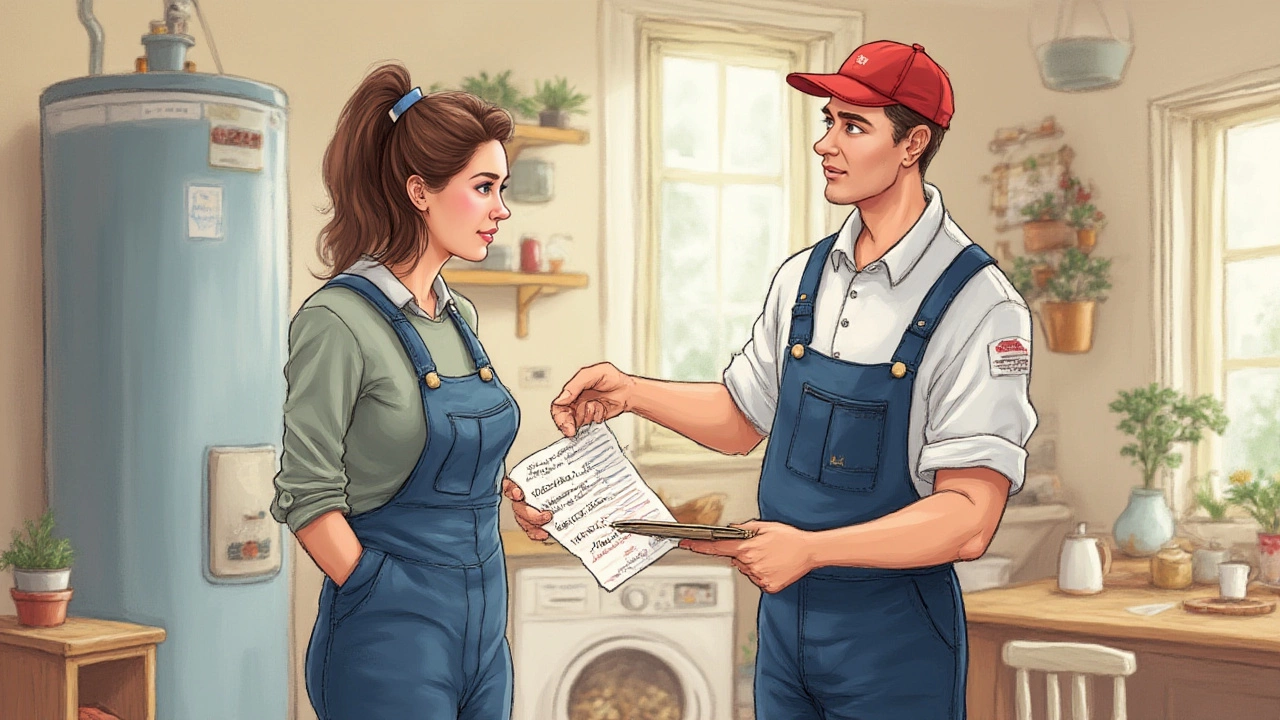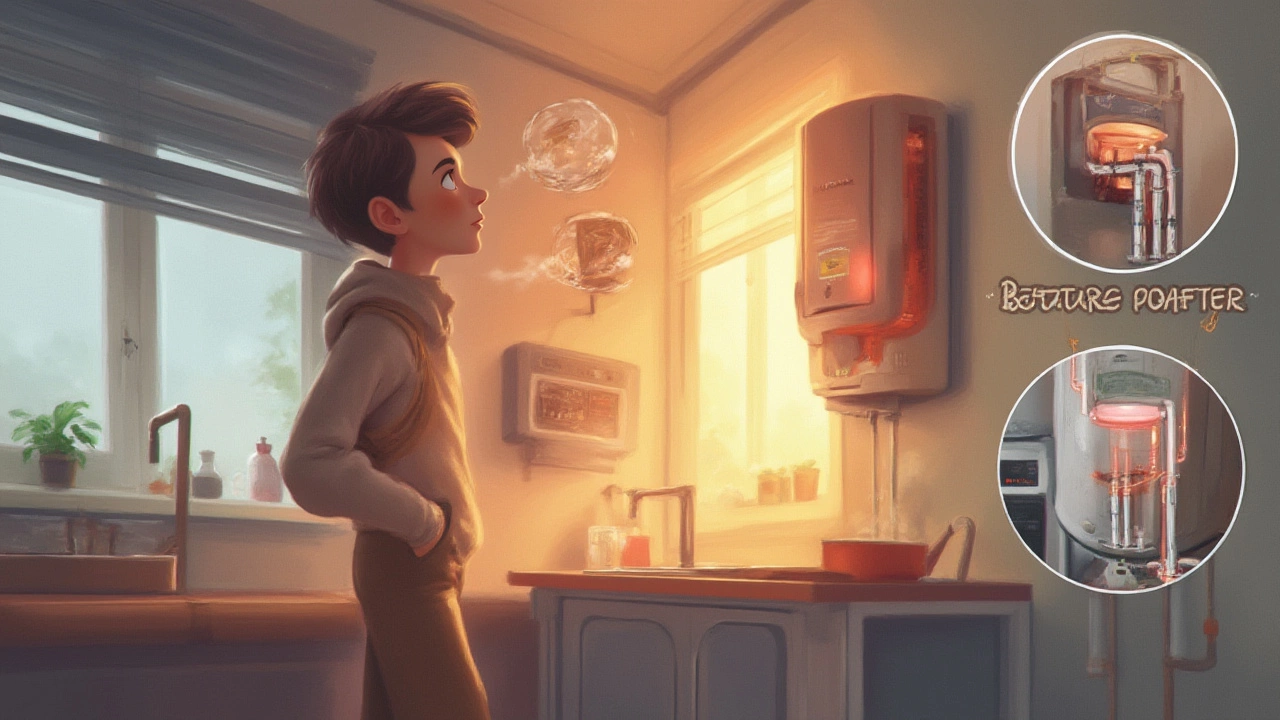Ever step into the shower only to find ice-cold water mocking your drowsy optimism? You jab at the hot tap, check the pipes, and wander over to your hot water heater, expecting answers. Then you spot it: the reset button – popped out again. This little button gets a ton of blame for interrupted showers, but it’s not the real culprit. Something else trips it, often for reasons that are both surprisingly simple and worryingly serious.
Understanding the Hot Water Heater’s Reset Button
Let’s get one thing straight—the reset button isn’t evil, nor is it lazy. Its job is to keep your entire household safe by acting as a built-in emergency shut-off. Officially, it’s called the Energy Cut Off (ECO) switch. Found on most electric water heaters, this red button automatically shuts everything down when the water temperature gets too hot—usually above 150°F (66°C). This isn’t just about keeping your bath comfortable. Water that hot comes with a real risk of scalding, not to mention potential for damaging the heater or wiring. According to the American Burn Association, water at around 140°F can cause a significant burn in under 5 seconds. So if the reset button is tripping, something’s up that you really shouldn’t ignore.
The average lifespan of a water heater hovers around 8-12 years, and as parts wear down, the reset button tends to get a workout. But here’s the thing—just hitting the button again and again without knowing what’s wrong is a bit like repeatedly resetting your smoke alarm without ever looking for smoke. You might get your hot water back for a bit, but you haven’t fixed anything.
Why Does the Reset Button Keep Tripping?
Get ready to meet the usual suspects. The reset button’s biggest enemy? Overheating. But what’s actually causing the heat to spike out of control?
- Malfunctioning Thermostat: Thermostats on most hot water heaters can stick, go bad, or lose their accuracy over time. If it fails, it might let the water temperature climb way past the safe limit. Should that happen, the reset button is your line of defense, instantly cutting the power.
- Failed Heating Element: Electric water heaters typically have two heating elements (top and bottom). If a heating element shatters or develops a short, it can stay stuck in the ‘on’ position. Water can heat up uncontrollably—again, the reset button steps in to prevent things from getting dangerous.
- Loose or Damaged Wiring: Anytime wires are loose—usually due to age, vibration, or improper installation—you’re asking for trouble. Poor connections make things run hot, setting off the ECO’s internal alarm.
- Mineral Buildup: Hard water is relentless. In areas with mineral-rich water, scale forms inside the tank and around heating elements. This buildup insulates the elements, making them work harder and overheat.
- Bridge Wiring Issues: Sometimes, the electrical junction box or breaker panel sends the wrong voltage or has a failing component. A 240V heater forced to run with too little power or unstable surges can overheat, tripping the switch.
- Bad ECO Switch: Occasionally, the switch itself gets worn out or loses accuracy. If your heater is older than most college sophomores, the ECO (reset button) could just be tired after thousands of cycles.
Here’s a quick data table showing the common causes and how often they’re the culprit, based on actual service records from a midwestern US plumbing company:
| Cause | Frequency (%) | Typical Cost to Fix (USD) |
|---|---|---|
| Defective Thermostat | 35 | 90 - 150 |
| Failed Heating Element | 28 | 120 - 200 |
| Loose Wiring | 12 | 75 - 180 |
| Mineral/Scale Buildup | 17 | 100 - 300 |
| Faulty ECO Switch | 8 | 110 - 180 |

How to Troubleshoot a Tripping Reset Button
Spotting the root cause isn’t always straightforward, but it beats shivering in a cold shower. Let’s break down the DIY approach before you start shopping for a new heater or endlessly hitting that faithful red button.
- Turn Off Power: Find the breaker that powers your water heater and shut it off. Don’t trust just the reset button—electricity and water make awful dance partners.
- Check for Visible Issues: Remove the access panels and insulation. Look for any burnt wires, melted plastic, or signs of corrosion. Smell something off, like burnt toast? That might be your heater’s wiring pleading for help.
- Test the Thermostats: Use a multimeter set to continuity and check the thermostat terminals. If the thermostat doesn’t break the circuit at its set temp, it’s toast.
- Inspect Heating Elements: Use the multimeter again—bad elements usually show an open circuit or very low resistance. If one or both elements are faulty, they’ll need replacing.
- Look for Calcium Build-Up: Drain a few gallons from the bottom valve into a bucket. See any chunks or sand-like grit? Your tank’s been secretly gathering minerals—a flush is overdue.
- Reset Button Check: With the access panel open, gently press the button. If it clicks and holds after your fixes, power up the heater and listen. If it resets for a while but pops again, dig deeper or call in backup.
Safety tip: If you find heavy corrosion, water leaks around electrical components, or persistent tripping after fixes, call a licensed professional. Water heaters pack enough electricity to do real harm. Also, don’t mess with gas-powered units unless you have experience, because those involve carbon monoxide and gas ignition risks.
Tips to Prevent the Reset Button from Tripping
You don’t have to just wait for trouble to, well, trip you up. Regular care for your water heater goes a long way toward keeping that red button in check. Here are some habits that might earn you a few extra years of stress-free hot showers:
- Flush Once a Year: Draining a few gallons from the tank every 12 months helps keep mineral sludge from building up. Less scale means heating elements don’t overwork themselves into an early grave.
- Test Temperature Settings: Set your thermostats at 120°F. This is hot enough for showers and most laundry but safe from scalding risks. Plus, it helps electricity bills.
- Replace Faulty Parts Early: If your heater’s over 8 years old and you’re seeing repeated resets, swapping both thermostats or heating elements can sometimes rescue it from regular shutdowns.
- Check Breakers and Wiring: Flickering power or frequent resets may be due to loose connections at the breaker box. Especially in older homes, have an electrician check for safe, secure wires.
- Install a Water Softener: In hard water areas, this helps keep scale at bay, protecting both your heater and plumbing.
Here’s a fun bit—modern smart water heaters and add-on leak detection kits can now send alerts to your phone if temperature spikes or resets happen while you’re out. It’s not science fiction; these gadgets can actually help prevent costly floods or burns. According to a 2023 consumer electronics survey, nearly 15% of new water heaters sold in North America included some kind of smart monitoring capability—something almost unheard of five years ago.
If you make it a point to listen for odd noises (like “bubbling” or “sizzling”), keep an eye on your water temperature, and open up the access door to check for signs of trouble every so often, you’ll stay ahead of the most common problems.
Remember, a tripped reset button isn’t just an annoyance. It’s your heater’s way of flashing a warning sign. Ignore it too long, and you risk scalding, electrical fire, or water damage. So next time you see that reset button staring at you, don’t settle for a temporary fix—figure out what’s actually wrong, and your warm shower will thank you for it.
